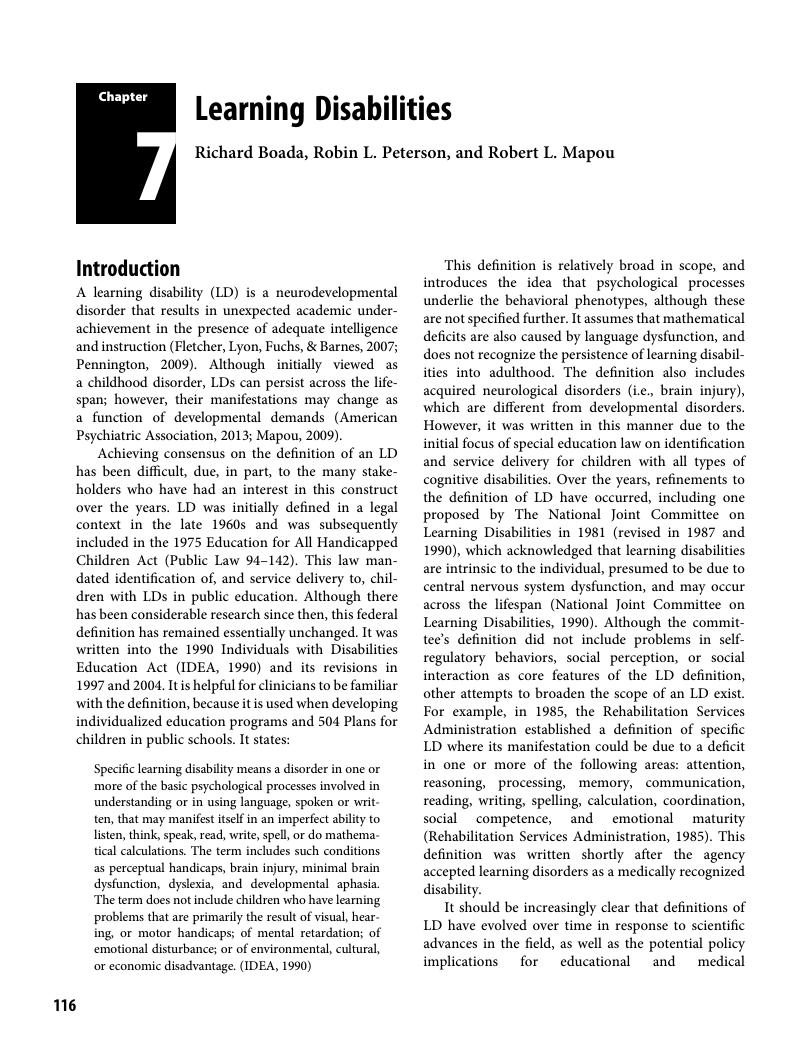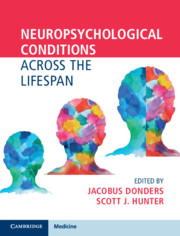Book contents
- Neuropsychological Conditions across the Lifespan
- Neuropsychological Conditions across the Lifespan
- Copyright page
- Contents
- Contributors
- Introduction
- Chapter 1 Preterm and Low-Birth-Weight Birth
- Chapter 2 Spina Bifida Myelomeningocele
- Chapter 3 Autism Spectrum Disorder
- Chapter 4 Intellectual Disability Syndromes
- Chapter 5 Fetal Alcohol Spectrum Disorders
- Chapter 6 Attention-Deficit/Hyperactivity Disorder
- Chapter 7 Learning Disabilities
- Chapter 8 Traumatic Brain Injury
- Chapter 9 Cancer
- Chapter 10 Epilepsy
- Chapter 11 Human Immunodeficiency Virus
- Chapter 12 Multiple Sclerosis
- Chapter 13 Stroke
- Chapter 14 Dementia
- Index
- References
Chapter 7 - Learning Disabilities
Published online by Cambridge University Press: 27 July 2018
- Neuropsychological Conditions across the Lifespan
- Neuropsychological Conditions across the Lifespan
- Copyright page
- Contents
- Contributors
- Introduction
- Chapter 1 Preterm and Low-Birth-Weight Birth
- Chapter 2 Spina Bifida Myelomeningocele
- Chapter 3 Autism Spectrum Disorder
- Chapter 4 Intellectual Disability Syndromes
- Chapter 5 Fetal Alcohol Spectrum Disorders
- Chapter 6 Attention-Deficit/Hyperactivity Disorder
- Chapter 7 Learning Disabilities
- Chapter 8 Traumatic Brain Injury
- Chapter 9 Cancer
- Chapter 10 Epilepsy
- Chapter 11 Human Immunodeficiency Virus
- Chapter 12 Multiple Sclerosis
- Chapter 13 Stroke
- Chapter 14 Dementia
- Index
- References
Summary

- Type
- Chapter
- Information
- Neuropsychological Conditions Across the Lifespan , pp. 116 - 138Publisher: Cambridge University PressPrint publication year: 2018



